Shenzhen-Zhongshan Link further connects cities in Greater Bay Area, boosts growth, competitiveness
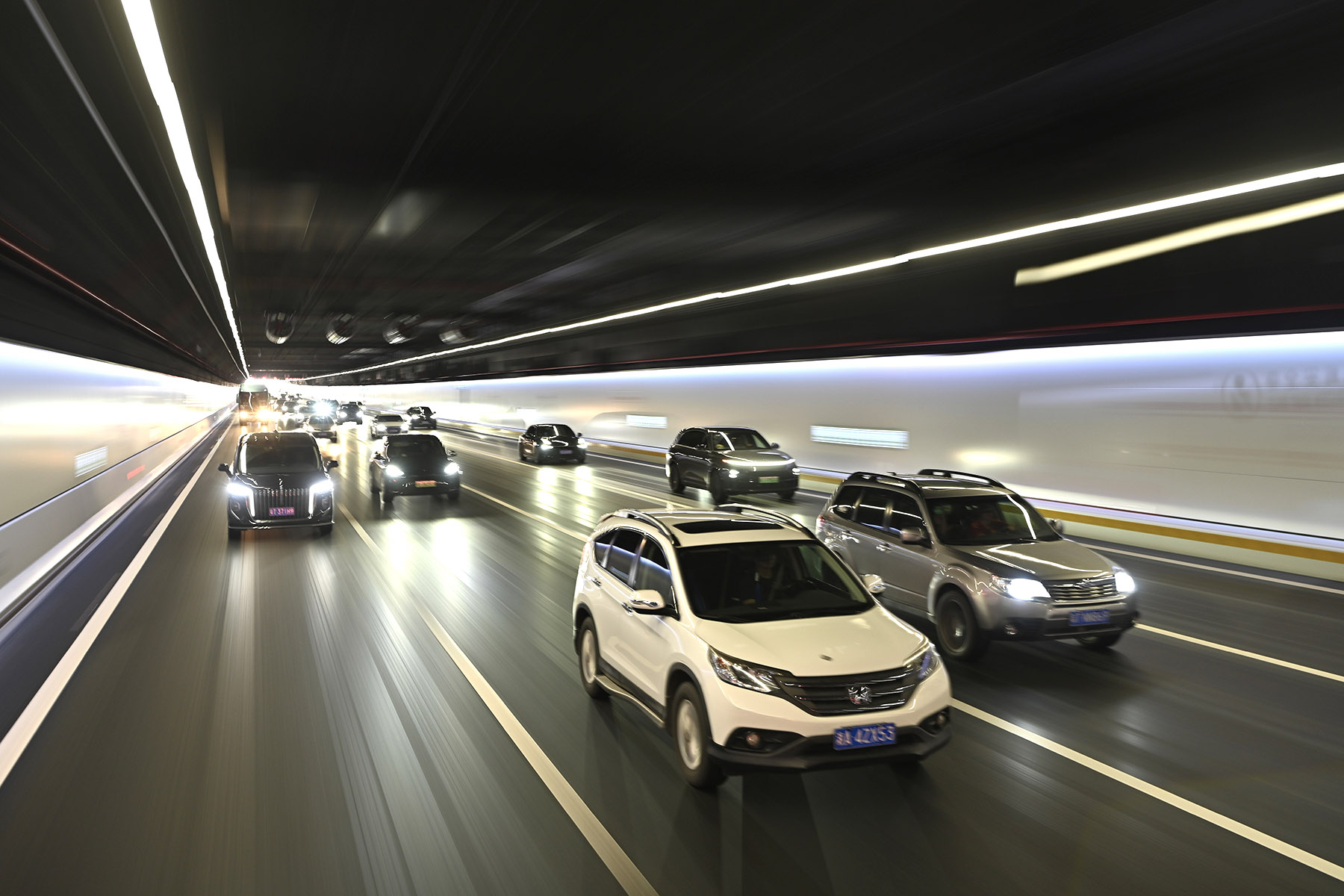
The Shenzhen-Zhongshan Link is expected to even out economic disparity in the Pearl River Delta, boost the region's global competitiveness and make commuters' lives much easier, experts said.
The long-awaited 24-kilometer link, built with an estimated cost of 44.69 billion yuan ($6.38 billion), opened to traffic on June 30 after seven years of construction, establishing a vital transportation connection across the Pearl River region.
The infrastructure marvel, which features two bridges, two artificial islands and an undersea tunnel, triumphed over numerous technical challenges during its construction and set multiple engineering records.
READ MORE: Landmark project to deliver major economic benefits
The eight-lane expressway in Guangdong province, which is designed for a traffic speed of 100 km per hour, starts at Shenzhen airport interchange and crosses the Pearl River estuary to connect with Ma'an Island in Zhongshan.
It joins the city clusters of Shenzhen, Dongguan and Huizhou in the eastern part of the Pearl River Delta to the cities of Zhuhai, Foshan, Zhongshan, Jiangmen and Zhaoqing in the western part, strengthening connectivity of people, businesses, manufacturing and infrastructure in the Greater Bay Area.
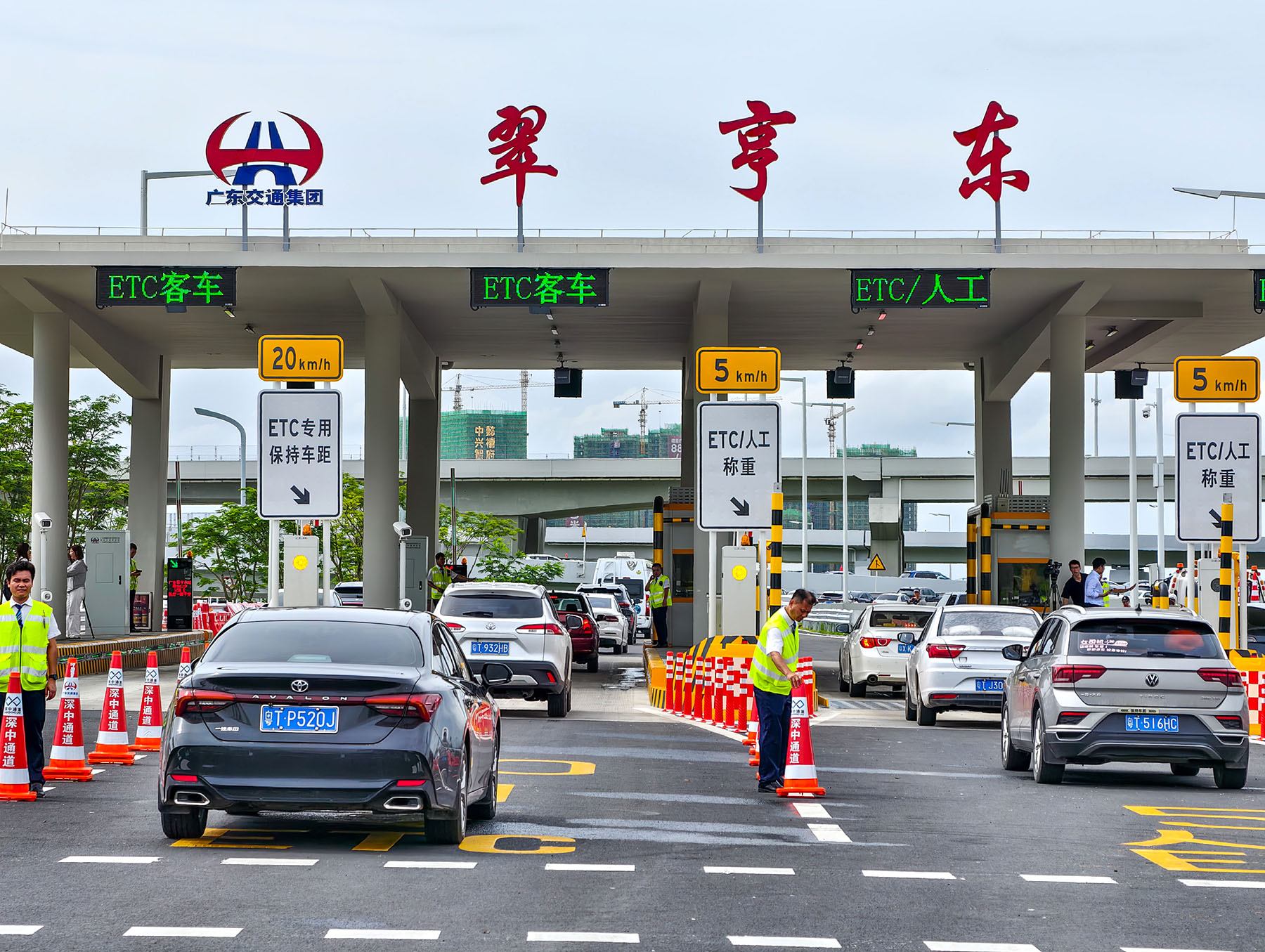
Balancing growth
The link shortens the travel times between the cities, and has significantly altered the regional landscape, said Wei Jianzhang, vice-president of the Belt and Road Initiative's International Cooperation and Development Research Institute in Shenzhen, Guangdong province.
"It accelerates the region's development by facilitating economic coordination, efficient transportation, cultural exchanges, and social integration. This infrastructure serves as a bridge transforming the Greater Bay Area's global competitiveness," he said.
The project also greatly benefits several cities on the western bank of the Pearl River and will help promote co-construction of industrial and innovation systems, Wei said.
"In terms of residents, both sides can enjoy high-quality living standards. Shenzhen residents can purchase more comfortable housing in Zhongshan at lower prices, while Zhongshan residents can easily access cultural activities in Shenzhen, such as top class performances," he said.
Liu Daizong, the East Asia director at the Institute for Transportation and Development Policy based in Beijing, sees the link as a catalyst to promote regional integration and growth, and eventually, coordinated development of the GBA.
"Enhancing transportation connectivity is the first step toward promoting regional integration," he said.
Liu divides the GBA into three areas: Zhongshan, Zhuhai, and Macao on the western bank of the Pearl River; Hong Kong and Shenzhen on the eastern bank; and Guangzhou on the northern bank.
The link provides excellent development opportunities for the economically less-developed cities on the western bank, allowing them to engage in direct business with Shenzhen and other cities, he said.
"This infrastructure opens up possibilities for strategic interactions among the three regions, which represents a form of benign competition. Overall, it will promote the coordinated development of the Greater Bay Area," he said.
Wei said the development of the region relies on various elements such as labor, capital, technology, information, data, and land. Cities on the western bank can benefit from these key elements being combined in new ways to boost efficiency and output.
This will improve wages, profitability, and returns, and ultimately drive economic growth and improve the region's global competitiveness, Wei said.
"The link not only accelerates the flow of these elements and opportunities, but also fosters economic coordination, efficient transportation, cultural exchanges, and social integration in the region," he said.
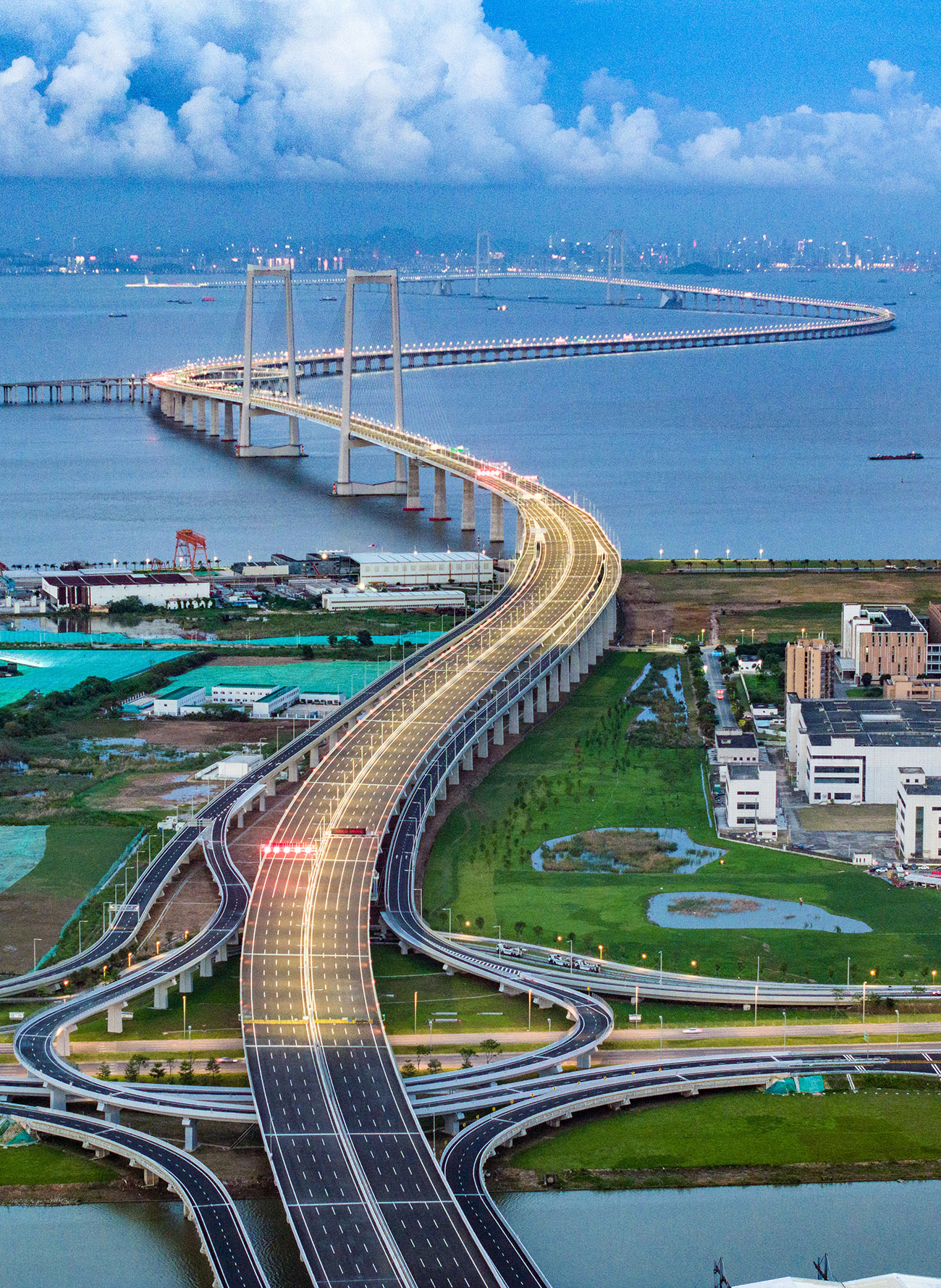
Benefiting people
The link, which reduces average travel time between Shenzhen and Zhongshan from approximately 2 hours to just 30 minutes, commenced trial operations at 3 pm on June 30.
On its opening day, motorists flocked to try the link, resulting in traffic jams. Within the first 24 hours of operation, 125,000 vehicle trips were recorded.
The new infrastructure project quickly became a trending topic on social media platforms, with photos of drivers breaking traffic rules to capture sunset views from the bridge, which went viral.
Residents on both sides have eagerly embraced the link, anticipating the improved connectivity and economic opportunities it will bring.
Shenzhen resident Huang Mu said her friends and relatives have been talking for a long time about the new transportation passage and its potential benefits.
The 40-year-old has a cousin who lives in Zhongshan. Before the Shenzhen-Zhongshan Link opened, motorists had to make a detour via the Humen Bridge to travel between Zhongshan and Shenzhen.
"Me and my cousin mean to see each other more often, but the traffic is pretty challenging, especially during the holidays," she said, referring to the notorious traffic congestion on the Humen Bridge, which opened in 1997.
"We local people always say it is better to have three spare hours to cross the (Humen) bridge during the holidays."
Huang plans to drive with her son to Zhongshan via the new link to visit her cousin during the summer vacation.
Many people working in Shenzhen, including one of her colleagues, have bought an apartment in Zhongshan because of the lower property prices, Huang said.
"As soon as the new link opened, my colleague began considering commuting between Zhongshan and Shenzhen every day, instead of staying in a rented apartment in Shenzhen during weekdays," she said.
Zhongshan resident Ye Qifan, 27, said his friends were also excited about the link opening. He said that the bus commute between the cities is convenient and affordable.
"It's great news for us. I think I will travel to Shenzhen and Hong Kong more often," he said.
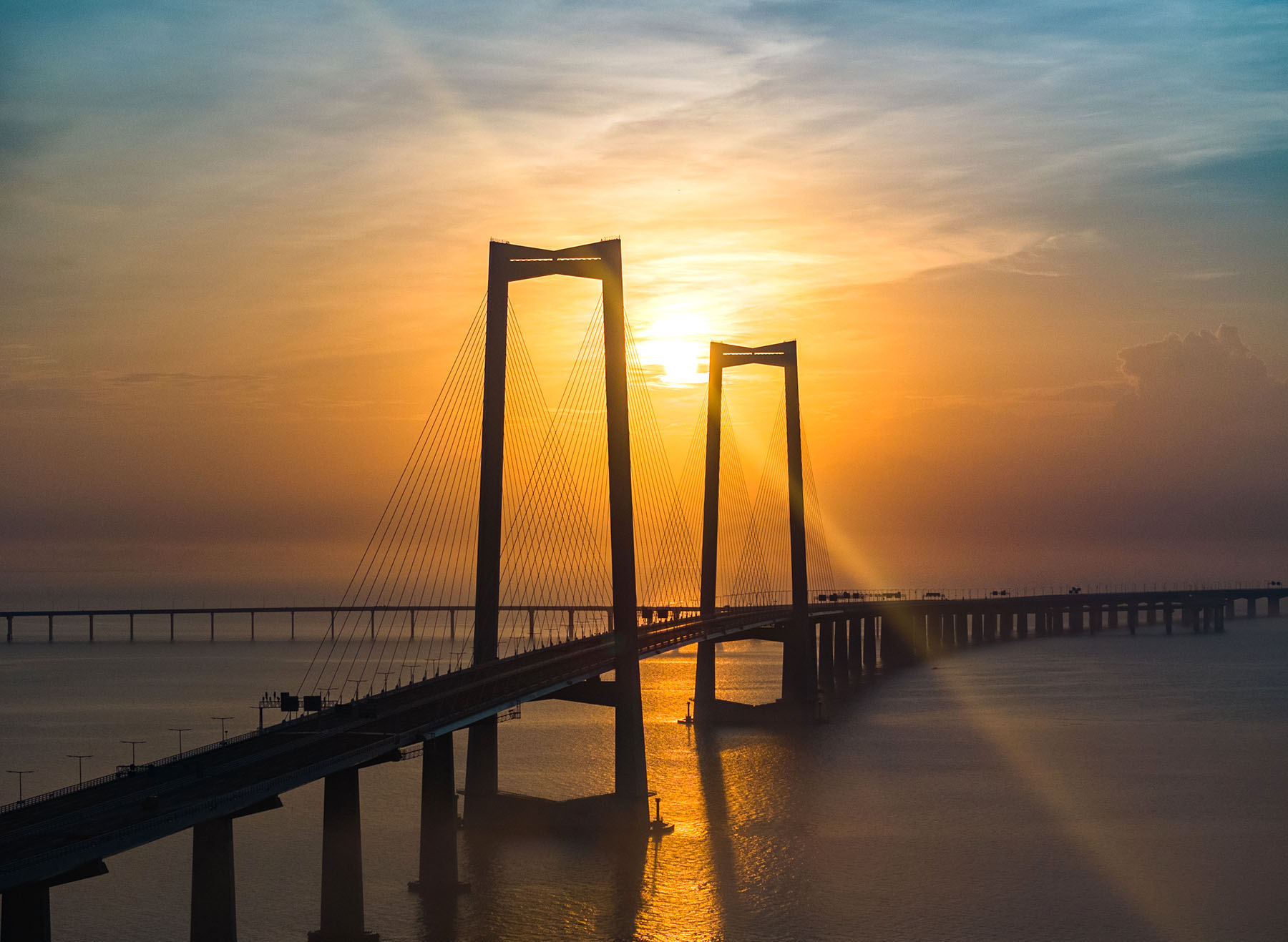
Multiple access
In addition to the Shenzhen-Zhongshan Link, three other transportation passages cross the Pearl River Estuary, linking the region's eastern and western sides. The Humen Bridge and Nansha Bridge both connect Guangzhou and Dongguan, and the Hong Kong-Zhuhai-Macao Bridge connects the three cities.
Situated 30 km south of the Humen Bridge and 31 km north of the Hong Kong-Zhuhai-Macao Bridge, the Shenzhen-Zhongshan Link is strategically positioned to significantly alleviate traffic congestion and facilitate the movement of people and goods across the Pearl River.
The densely populated Greater Bay Area, with over 86 million people, needs a more developed transportation network, and local government is making plans to build more transportation links to better connect the region, said Li Hui, an assistant professor at the School of Media and Communication at Shenzhen University.
The transportation cluster will play a significant role in propelling the development of the region, fostering mutual growth among cities, and creating a win-win situation for everyone involved, he said.
"With the opening of the new link, it is poised to not only benefit Zhongshan, Guangzhou, and Shenzhen, but also establish a more robust transportation network that connects major metropolitan areas with medium-sized and smaller cities in the region, fostering shared development," he said.
Cities on the Pearl River's western bank can accommodate Shenzhen's industrial shift, leading to mutual growth, Li said.
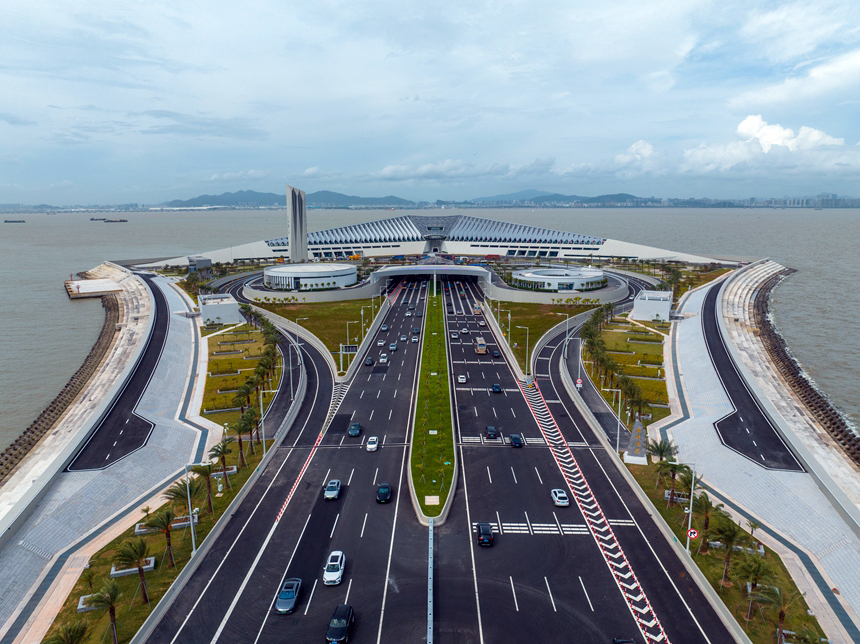
Engineering challenges
The Shenzhen-Zhongshan Link has been recognized by the global engineering community as the second "disappearing bridge" built by China, following the opening of the 55-km Hong Kong-Zhuhai-Macao Bridge in October 2018.
The new link is one of the most challenging cross-sea cluster projects to have been built, and has set multiple construction records in areas such as suspension bridge engineering, tunnel construction and underwater highway interchanges.
The link has garnered global recognition for its innovation and quality, and stands as a testament to China's engineering excellence and commitment to pushing boundaries, according to experts.
In May, the International Tunnelling and Underground Space Association awarded the Shenzhen-Zhongshan Link the title of "One of the 50 Iconic Projects in the Global Tunnel and Underground Engineering Sector".
In June, the project was honored with the George Richardson Award at the International Bridge Conference, receiving high praise from international peers for its engineering innovation and quality. The IBC is recognized as the preeminent arena of the global bridge construction industry.
The undersea tunnel represents a significant engineering feat, and was one of the most formidable challenges of the project. As the world's longest and widest underwater steel shell-concrete immersed tube tunnel, it features a tube section spanning 5,035 meters.
Ning Jinjin, a senior engineer from the First Harbour Engineering Company of China Communications Construction Company (CCCC), said innovation was key to solving problems encountered in such a monumental project.
Ning was responsible for the intricate task of submerging the tube underwater, and emphasized the importance of identifying and resolving issues in a systematic manner.
ALSO READ: World records highlight pioneering technologies and materials
"For engineers, the challenges encountered in projects are fundamentally straightforward — it's about progressing through the process of identifying and resolving issues, a simple cyclical approach," he said. To overcome logistical hurdles, engineers built a vessel equipped with an automated navigation system to transport the tube from the manufacturing base, situated roughly 50 km from the construction site.
To expedite the tube's movement through the primary navigation channel of the Pearl River, engineers sought ways to control the vessel's speed.
"Solving practical problems lies at the heart of our work," said Ning, who drew on his involvement in the construction of the Hong Kong-Zhuhai-Macao Bridge's undersea tunnel for the latest project.
Suo Xuhong, another senior engineer from the engineering company, said he is proud of the team's utilization of the Beidou Navigation System for precise placement of the undersea tube, which highlighted the accuracy and reliability of the China-developed system.
In addition to the remarkable undersea tunnel, a series of groundbreaking achievements were realized in bridge construction.
The Shenzhong Bridge has set several world records, including boasting the longest span for an offshore steel box girder suspension bridge at 1,666 meters, and achieving the highest navigational clearance of 76.5 meters.
Qiu Quanlin in Guangzhou and Liu Kun in Wuhan contributed to this story.



